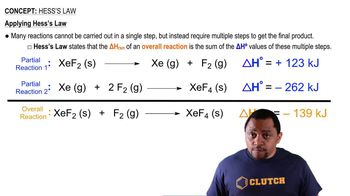Here are the essential concepts you must grasp in order to answer the question correctly.
First-Order Reaction Kinetics
First-order reactions are characterized by a rate that is directly proportional to the concentration of one reactant. The rate law for a first-order reaction can be expressed as rate = k[A], where k is the rate constant and [A] is the concentration of the reactant. The integrated rate law for such reactions allows us to relate concentration and time, which is essential for calculating how long it takes for the absorbance to change.
Recommended video:
Beer-Lambert Law
The Beer-Lambert Law describes the relationship between absorbance (A), concentration (c), and path length (l) in a solution, expressed as A = εcl. Here, ε is the molar absorptivity or extinction coefficient. This law is crucial for determining the concentration of the colored reactant from its absorbance at a specific wavelength, allowing us to track the progress of the reaction over time.
Recommended video:
Extinction Coefficient
The extinction coefficient (ε) is a measure of how strongly a chemical species absorbs light at a given wavelength, expressed in units of M^-1 cm^-1. In this context, it quantifies the absorbance of the colored reactant at 520 nm, enabling the calculation of concentration changes as the reaction proceeds. Understanding this coefficient is vital for applying the Beer-Lambert Law to determine how long it takes for the absorbance to reach a specified value.
Recommended video:
Electron Capture & Positron Emission Reaction Example




